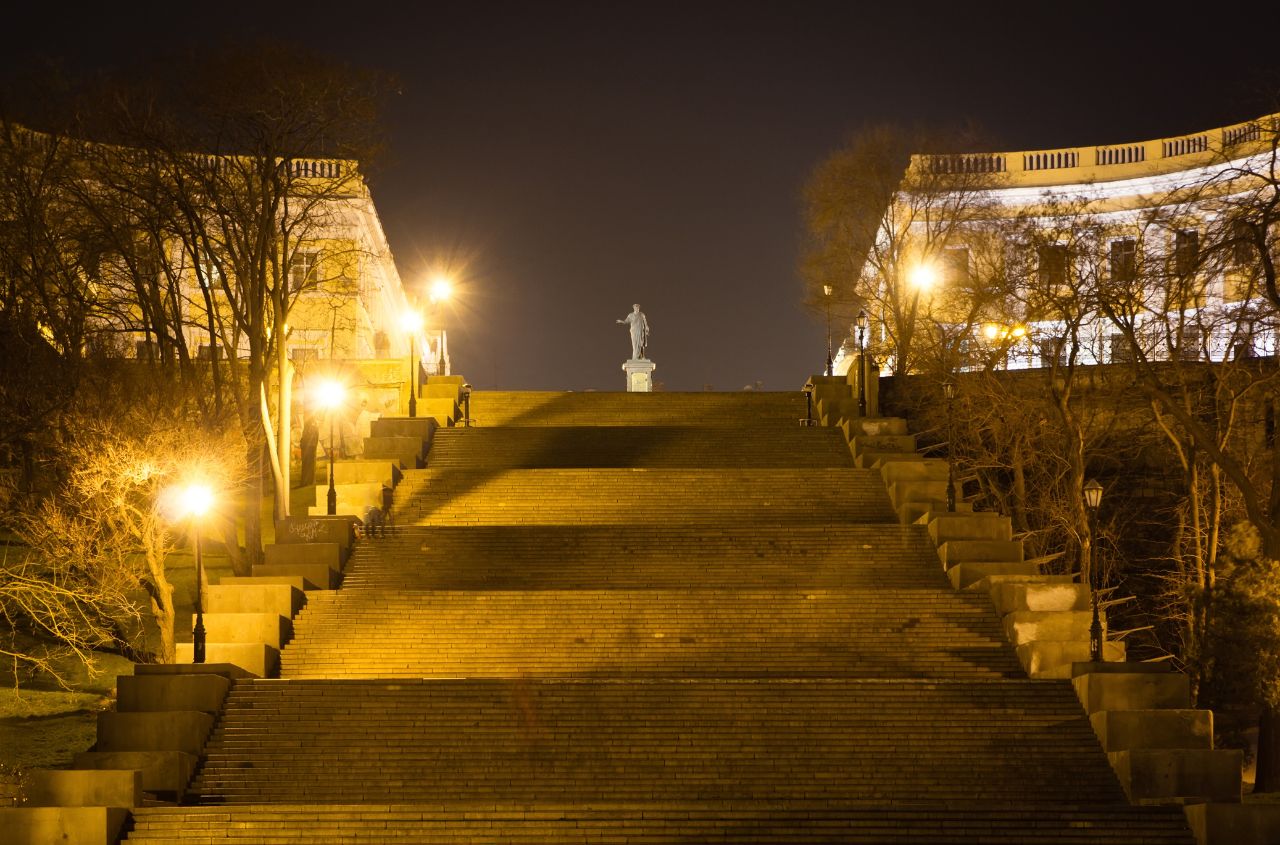The funds of the Odessa Museum of Eastern and Western Art contain the valuable works of Dutch masters: paintings, engravings, original drawings, and Delft faience. And of this number, only 4 paintings are on permanent display. In this article, we want to tell you about 4 paintings in the museum's depositories.
Egbert van Heemskerck the Elder
1634-1704
Scene in a Pub

Oil on panel, diametr – 18,5 cm

Oil on panel, diametr – 18,5 cm
Both paintings in the 19th century were stored in the Odessa collection of Prince Mikhail Semenovich Vorontsov. One of them (which one is unknown) took part in the exhibition of the Odessa Society of Fine Artists in 1884. At the beginning of the 20th century, the paintings were in the collection of the Odessa Art School, as evidenced by the stamps on their backs. The paintings entered the museum in the early 1920s through the Museum Fund.
Egbert van Heemskerck or Egbert Jaspersz van Heemskerk is a representative of the Haarlem school, was one of the painters who specialized in low-life scenes, which were very popular in Dutch painting of the 17th century. There are many obscure points in the artist's biography, his paintings are often confused with the works of his son Egbert van Heemskerck Jr. (1666-1744), who copied his father's styles, but it is well known that in the early 1680s Heemskerck Elder moved to London and never reverted to his homeland. It is possible that it was in London that Prince Vorontsov bought his paintings.
They belong to the famous series of genre paintings in the inn, in which Egbert the Elder, an artist of the poor Haarlem, depicts drunks, players, charlatans. His grotesque characters are rude and ugly but endowed with expressiveness and a kind of humor. The painting technique of such small paintings is distinguished by careful execution, warm color and a sense of sympathy of the artist to his inconspicuous characters. In general, his work marks the transition to the masters of the next, 18th century, to Cornelis Troost and William Hogarth.
Dirck Dalens the Elder
1600-1676
Apollo pasturing the herds of Admetus or Apollo the Shepherd

Oil on panel, 43x75 cm
The work came to the museum in 1956 from the Hermitage, but it comes from the collection of the famous Russian scientist, traveler, collector and public figure Peter Semenovich Tyan-Shansky (1827-1914). In 1910 he sold his magnificent collection of paintings by Flemish and Dutch artists of the 16th-17th centuries to the Hermitage with the condition that it would always be kept in the museum. However, after 1917, the Soviet government began selling paintings from this collection abroad, and some transferred to other museums in the Soviet Union.
Thus, the painting "Apollo, guarding the herds of Admetus" got to the Odessa Museum of Western and Oriental Arts. Landscape with mythological characters became especially popular in Holland in the second half of the 17th century. Dirk Dalens Sr., an artist from the city of Dordrecht, belonged to the Dutch "Italianists" - masters who preferred to depict not the landscapes of his native country, and sunny Italy. The plot of the picture is borrowed from Greek mythology, which tells that the god of light and patron of art Apollo served for some time as a shepherd of the king of Thessaly Admetus, thus atonement for the murder of the dragon Python.
In this painting, the artist focused on the landscape itself, in which the real landscape is built according to the aesthetic canons of classical art with its temples, nymphs and more. Interestingly, the round temple in the background on the left is similar to the ancient Roman temple of Vesta in Tivoli. The figures of people in his paintings were painted, according to some art critics, by the artist Anthony Padamandes (1601-1673). Dirk Dalens the Elder founded a famous artistic dynasty: his two sons and grandson also became painters.
Isaac Dennies
1647-1690
Still life

Canvas glued on a panel, oil, 25x20,5
The painting came to the museum in 1923 from the State Museum Fund as a work by an unknown Dutch artist of the 17th century. Prior to that, the painting was stored in the Art School of the Odessa Society of Fine Arts. During the Second World War, among the most valuable paintings in the museum collection, she was evacuated to the Urals and returned in 1944. Unfortunately, the picture has not reached us in its original form: once it was cut on both sides vertically.
Still life distinguishes delicate and careful execution of all details, up to transparent drops of water on a peach, laconicism in the choice of subjects, contrasting lighting.
The study identified the possible author of the painting, Delft artist Isaac Dennis. He worked in the style of the famous still life master Willem van Alst, with whom he studied for some time in Amsterdam. He also borrowed from him a certain set of items that pass from the picture to him: peaches, twigs, grapes, nuts, butterflies. According to its certain still life repertoire, compositional-typological solution and stylistics of artistic interpretation, the picture is close to the few signature works of Jacob Dennis.
The image also has a hidden meaning of Christian symbolism, typical of Dutch still lifes: peaches signify the fall, split nuts the soul freed from sin, grapes the communion, and the butterfly the immortal human soul. Included in the picture and the theme of the perishability of all things earthly: spoiled fruit and leaves.
Jost Cornelisz Droochsloot
1568-1666
Festive Procession

Oil on canvas, 78x111,5
Jost Cornelisz Droochsloot spent his entire life in Utrecht, where at the age of 30 he became the chief artist of the guild of St. Luke, then three times was elected its dean. The artist led an active social life: he was the regent of the shelter for the poor of St. Job, the deacon of the Reformed Church and was twice elected a member of the night watch of Utrecht.
Such activity was characteristic of the inhabitants of the young Republic of Holland, it is no coincidence that the most popular genre of painting became everyday life, since it was one of the means of struggle for national identity: everyday reality turned out to be an inexhaustible source of artistic images.
The painting depicts the folk festival of farewell to winter, but for the inhabitants of Utrecht, it was another reason to feel the role of their city in the struggle for independence: after all, it was here in 1579 that the Utrecht Union was concluded, which marked the beginning of the unification of the northern Dutch provinces into an independent state. It is no coincidence that the people sitting in the sleigh hold the state tricolor flag of the Netherlands.
It is interesting that the artist in this central part of the picture, on the tree trunk, left the signature “D†- the first letter of his surname. He seemed to indicate his invisible presence next to the joyful compatriots. Droochsloot managed to create a typical image of his country warmed by a warm feeling.
Based on materials from the catalog of the exhibition "Golden Age" Dutch Art of the 17th century
To be continued...





















